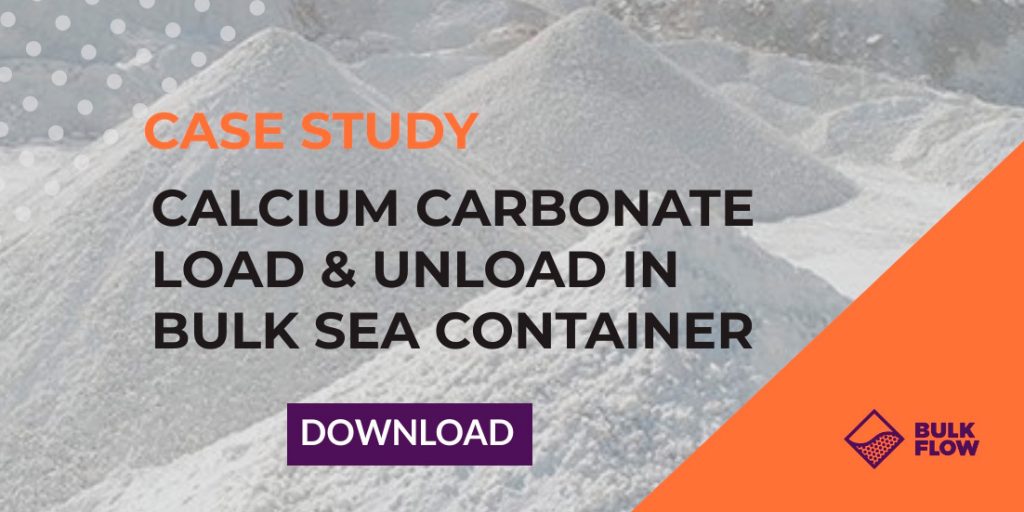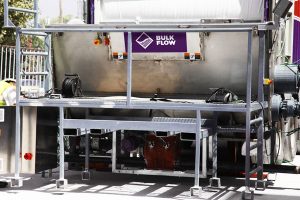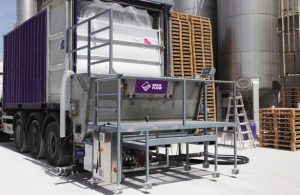Calcium Carbonate (CaCO3) is one of the most versatile chemical compounds in nature.
Just as an example, calcium carbonate makes up almost 4% of the earth’s crust as limestone, chalk, and marble. It is produced by the sedimentation of the shells of fossilized shellfish and/or corals over millions of years. Its presence is well distributed all over the world.
Even though the three forms of calcium carbonate listed above are chemically identical (they are all CaCO3), there is a difference in how it was formed. The time of sedimentation, water presence, purity, the minerals’ thickness and homogeneity vary. After all, calcium carbonate is probably one of the most versatile materials known to man. It can be used in the construction industry as a building material or in the form of aggregate for concrete, road building, etc. It is also used as a component in the cement industry as preparation material for builder’s lime by burning in a kiln, for example.
FUN FACT: Did you know that the Great Giza Pyramid is entirely made of limestone (calcium carbonate)?
It’s great versatility is also evident in the plastics industry as a filler and as the main compound in the purification of iron in blast furnaces, forming the slag carrying most impurities with it during the process. Between 62 and 71% of the calcium carbonate consumed in the world is used in the paper industry first, plastics second. Calcium carbonate is also used:
- in the oil industry – added to the drilling fluids,
- in agriculture to regulate / neutralize the soil’s pH,
- in the sugar industry during the refining operation of sugar beet,
- in swwimming pools,
- ceramics,
- disposable diapers,
- juice,
- paper (replacing kaolin),
- and in water purification processes.
Interestingly enough, most dietary calcium supplements, gastric antacids, toothpaste, and phosphate binders are derived from calcium carbonate.
The importance of how calcium carbonate is delivered
There are probably thousands of different uses for calcium carbonate (from construction to food and dietary supplements), mainly in the form of a fine powder. Discharging the calcium carbonate from shipping containers is one of the biggest challenges in many of the industrial operations listed above.
Handling calcium carbonate is a bulk transport logistics operation, that needs to be efficient. The many uses associated with the abundance of this resource (it is the least expensive salt supplement) makes the way to transport, load and unload this product very critical. Logistics is one of the main factors of the products final overall cost. Beware of this dependence on the logistics process, how it affects the whole supply chain, making it so important for managers.
In the construction business, where large amounts of calcium carbonate are mostly used at each site for roads, dams and building, logistics must be precise or almost perfect to keep costs down since they only rely on makeshift structures and equipment to handle the materials.
In farming, the need for large amounts of calcium carbonate is also a constant one. It is even greater than in the construction industry. It’s of the utmost importance to have a delivery system that works well without an installed infraestructure because the profit margins are tighter and the farmers don’t have large amounts of capital to invest in equipment.
Understand the critical use of calcium carbonate in farming
In West Oregon the minimum soil pH for some crops is:
Crop(s)Minimum pH
| Alfalfa | 6.5 |
| Beans and cucurbits | 5.8 |
| Grain or silage Corn | 5.5 |
| Sweet corn | 5.8 |
| Forage and seed legumes | |
| Crimson/subterranean clovers, vetch | 5.5-60 |
| Red clover for forage or seed | 6.0 |
| White clover for forage or seed | 5.8 |
| Garlic | 6.5 |
| Pasture, seed, and turf grass | 5.5-58 |
| Vegetables, brassica (broccoli,etc.) | 6.3 |
Source: “Applying Lime to Raise Soil pH for Crop Production” (Western Oregon). Autors: Nicole P. Anderson; John M. Hart; Dan M. Sullivan; Neil W. Christensen; Donald A. Horneck; Gene J. Pirelli
The goal for the recommended limits is to maximizie the land’s productivity. The wide range in the pH needed shows that, without using an external component, it is almost impossible to control it to comply with the recommended limits.
The lime application rate also varies a lot, depending on the type of soil and pH range, as shown below:
Approximate Amount of Finely Ground Limestone Needed to Raise the pH of a 7-inch Layer of Soil
| Lime Requirements: tons/Acre | ||
| Soil texture | From pH 4.5 to 5.5 | From pH 5.5 to 6.5 |
| Sand and loam sand | 0.5 | 0.6 |
| Sand loam | 0.8 | 1.3 |
| Loam | 1.2 | 1.7 |
| Silt loam | 1.5 | 2.0 |
| Clay loam | 1.9 | 2.3 |
| Muck | 3.8 | 4.3 |
This is a typical logistics problem for bulk products and the calcium carbonate may be used in forms that vary from pebbles to fine powder.
Imagine a “Close-to-Reality” case
Back to the farming problem, if a farmer has a 100-acre farm with loamy soil and needs to change the pH from 5.5 to 6.5 he will need 170 tons of calcium carbonate to achieve this.
He’ll use one of the options below:
- Calcium carbonate comes in 50 kg sacks. It’s the most expensive operation for the farmer. It will take at least 8 trips on a truck (approx. 50 miles one-way) from the storage location to the farm. He’ll have to add the labor costs for loading and unloading the trucks, the excess cost generated by the packaging, plus the additional cost to transfer the calcium carbonate to the distribution tractor, and the recycling cost for all the packaging.
- A more expensive way to do it is with open dump trucks. Regular dump trucks are good for an approximate payload of 10 to 18 tons of calcium carbonate (average of 14 tons). It would take 12 trips at an average of 50 miles from the storage to the farm where the calcium carbonate will be transferred to the application machinery. A barn is used to protect the calcium carbonate from the rain and the wind while it is distributed through the farm.
- Big bags are the most common way to carry the calcium carbonate to a farm. More than 150 big bags would be needed along with a great deal of labor to load and unload to and from the transporting trucks. Labor is also needed to transfer the big bags to the application machinery at a high packaging cost. This process requires a minimum of 8 trips at 50 miles each way to transport the calcium carbonate to the farm and into a storage house / barn to store the bags while they’re not in use.
- Use bulk containers to load the bulk solids in the bulk container with: top loaders, bulk throwers, belt conveyors or pneumatic conveying systems. Any of these options is much more efficient, cost wise, than a single person with equipment manually loading the truck. If the calcium carbonate is packed into 50 kg sacks or 2,000 lbs big bags, then the 25 to 27 metric tons of product are transferred in less than 40 minutes because the total number of trips will be reduced to 6 (at least 2 trips less than with the other methods). The trucks used would have standard chassis, thus reducing the cost of equipment.
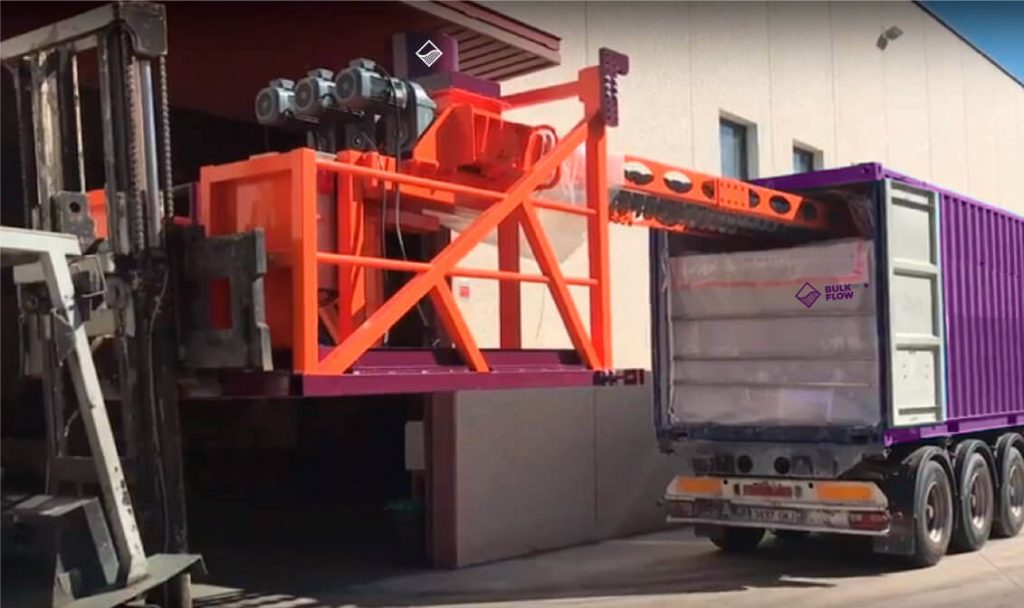
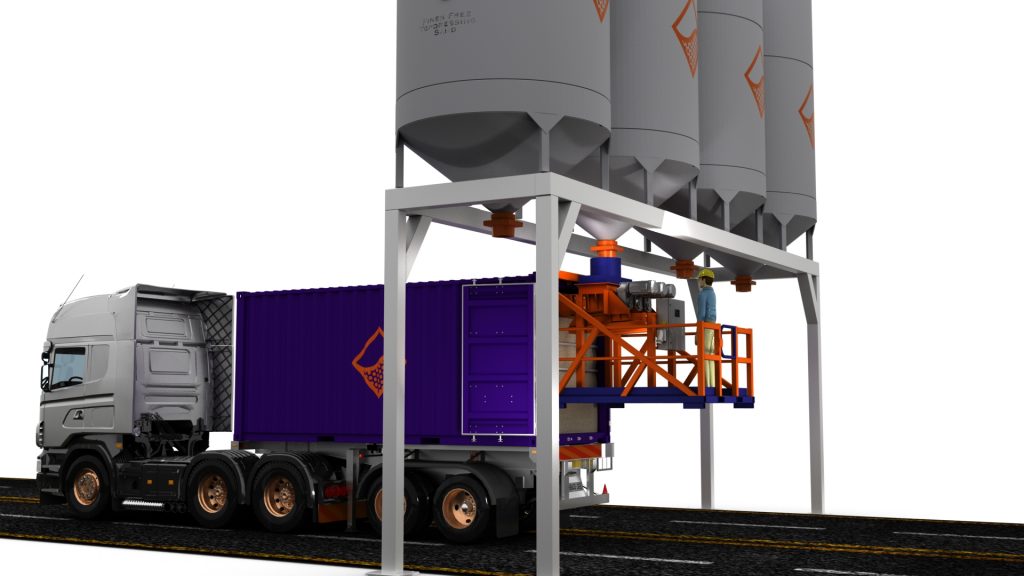
A container liner bag that needs to be installed in a maritime container to turn it into a bulk container has far less material in terms of packaging than the other options (50 kg sacks or big bags). This reduces the recycling / environmental costs along with the labor necessary to dispose, move around and store in the meantime.
Depending on the logistics process, the container could remain as a storage facility while the calcium carbonate is discharged. This reduces the need for storage houses or barns.
Depending on the type of container and liner, the transfer is also a lot more automated and simpler than using big bags or 50 kg sacks.
Check out the details of the beta trial with the Tilt-Less Liner System prior to release.
The Tilt-Less Liner System is one of the greatest innovations recently released in the container liner industry and it is available to all industries, in addition to the calcium carbonate industry.

